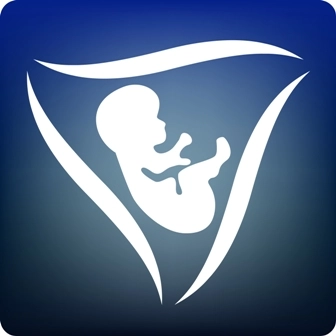ICD 10 Coding Alert
Say Hello to Hay Fever

Use these tips to get a handle on seasonal allergy coding.
Don’t wait until the soundtrack of your waiting room is mostly sneezes to catch up on the intricacies of coding seasonal allergies. While the pollen storms may have passed already, hay fever is on its way into town. Brush up on these codes so you’re ready for whatever allergens come your way.
Tip 1: Know Which Codes are for Seasonal Allergies
While J30.1 is your go-to code for hay fever and pollen-induced allergies, you don’t want to overlook some of the other codes in the J30 (Vasomotor and allergic rhinitis) category if your provider’s notes specify similar conditions. Those other choices include:
- J30.0 — Vasomotor rhinitis
- J30.2 — Other seasonal allergic rhinitis
- J30.5 — Allergic rhinitis due to food
- J30.81 — Allergic rhinitis due to animal (cat) (dog) hair and dander
- J30.89 — Other allergic rhinitis (includes perennial allergic rhinitis)
- J30.9 — Allergic rhinitis, unspecified.
Caution: Confusingly, ICD-10 has a second code for seasonal allergic rhinitis: J30.2. However, if you know the etiology of the two conditions, you will be able to distinguish between them easily.
“Seasonal allergic rhinitis can occur in spring, summer and early fall,” says Melanie Witt, RN, CPC, MA, an independent coding expert based in Guadalupita, New Mexico. “The typical causes are airborne mold spores, dust mites, or pollens from grass, trees and weeds. Since J30.1 specifically cites pollen as the cause, you would report J30.2 if the airborne mold spores or dust mites cause the condition,” Witt notes.
Tip 2: Understand the Trigger
“In many cases, the provider will not always document the trigger or reason for the allergic rhinitis,” cautions Chelle Johnson, CPMA, CPC, CPCO, CPPM, CEMC, AAPC Fellow, billing/credentialing/auditing/coding coordinator at County of Stanislaus Health Services Agency in Modesto, California. “So, you’ll need to look for wording such as seasonal allergens, pollen, food, hair/dander, or dust, mites, and so on. If no reason is given, you’ll need to use J30.9 for unspecified,” Johnson suggests.
A number of similar codes may possibly come into play. Vasomotor rhinitis (J30.0), for example, has a number of symptoms, such as sneezing, a runny nose, and nasal congestion, which are very similar to allergic rhinitis.
However, the condition’s causes are not related to the immune system, though they can be triggered by “airborne pollutants or odors … changes in the weather or underlying chronic health problems,” according to the American Academy of Allergy Asthma and Immunology (AAAAI) (Source: www.aaaai.org/conditions-and-treatments/conditions-dictionary/nonallergic-rhinitis-vasomotor).
Perennial allergic rhinitis, coded to J30.89, may also appear in your provider’s notes. Like vasomotor rhinitis, causes for this condition also differ from seasonal allergies. Primary causes are “dust mites, mold, animal dander, and cockroach debris” (Source: www.aafa.org/rhinitis-nasal-allergy-hayfever/). However, “the main difference between perennial rhinitis and other kinds of allergic rhinitis is that the patient has the condition year-round, but the cause is not stipulated,” says Witt.
Tip 3: Take Note of J30 Excludes1
Before you go ahead and assign a code to your patient’s condition, make sure you read the Excludes1 note for the J30 codes. Two other rhinitis codes — allergic rhinitis with asthma (bronchial), which is coded to J45.909 (Unspecified asthma, uncomplicated), and rhinitis NOS, which is a condition that has lasted for more than 12 weeks and is coded to J31.0. (Chronic rhinitis) — cannot be coded with any of the J30 conditions.
Tip 4: Don’t Forget Other Allergy Codes
You should also become with familiar with two other codes outside of the J30 category that may come into play once your provider offers a definitive diagnosis.
The first is T78.49X- (Other allergy). You would use this code when “allergic rhinitis makes a patient’s asthma worse or the patient develops a sinus or ear infection as a result of the allergy,” says Witt. That’s because “the T78 codes represent adverse effects of a person’s condition. As such they would be used infrequently in the case of allergic rhinitis, which is normally a short-term condition and easily managed,” Witt continues.
Hint: As T78.49X- is an external cause code remember to add the X placeholder and the appropriate seventh character from A (initial encounter), D (subsequent encounter), or S (sequela), depending on the nature of the encounter. And don’t forget: “there is an Excludes1 note with T78.4- that states it should not be reported with J30.1,” Witt notes.
The other code to remember is Z91.09 (Other allergy status, other than to drugs and biological substances). “This would indicate that the condition may influence the patient’s health status even though it is not an active illness,” says Johnson. Or, as ICD-10 guidelines put it, noting the condition as a status “is informative, because the status may affect the course of treatment and its outcome.”
“Under this rule, then, if a patient is being treated for asthma, but also has seasonal allergies, the Z code might give more information, but it is not required if the treatment is not affected by this fact,” Witt concludes.
Related Articles
ICD 10 Coding Alert
- Primary Care:
Say Hello to Hay Fever
Use these tips to get a handle on seasonal allergy coding. Don’t wait until the [...] - Gastroenterology Focus:
Brush Up On These Common GI Coding Situations
Hint: Coding for medical necessity in ASCs may smooth payer interactions. Ambulatory surgery centers (ASC) [...] - Pediatrics Spotlight:
Know These Differences Between Attention Disorders
Distinguish these subtleties to ensure accurate coding. Diagnosing and coding attention-deficit disorders may seem easy, [...] - What Do You Think:
Test Your Sciatica Coding Skills
Don’t forget to check whether sciatica is accompanied by lumbago. Brush up on the both [...] - You Be the Coder:
Utilize Surgery Notes and Pathology Information
Question: Our surgeon took a bladder biopsy using a cystoscope and in the op report, [...] - Reader Question:
Know This Particular Combo Code
Question: A payer has denied our claim for a pain management office visit with the [...] - Reader Question:
Code the Dx, not the Complication
Question: A patient had a repeat Cesarean section due to pre-eclampsia. What is the correct [...] - Reader Question:
'Translate' This Term to Understand Appropriate Code
Question: After a level-three evaluation and management (E/M) service for a new patient, the provider [...] - Reader Question:
Don't Use These Two Codes Together
Question: What is the ICD-10-CM code to report for chronic obstructive pulmonary disease (COPD) with [...]




